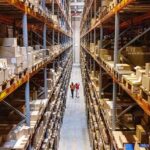About TRST01
TRST01 FAQs is designed to provide concise and comprehensive answers to commonly asked questions about TRST01, its solutions, and the technologies it utilizes. It serves as a helpful resource for individuals seeking information about TRST01’s blockchain technology, Web3, AI, IoT, and their applications in addressing global challenges in climate, agriculture, and food. The FAQ aims to clarify any doubts, highlight the unique aspects of TRST01’s offerings, and provide a deeper understanding of the value it brings to the market. By addressing frequently asked questions, TRST01 FAQ ensures that individuals have access to relevant information, fostering transparency and trust in the ecosystem.
What is TRST01 ?
TRST01 is a data-driven sustainability tech company tackling global challenges in climate change. They offer solutions for sustainable supply chain traceability, ESG management, monitoring and reporting, and climate action digitization
What solutions does TRST01 offer ?
TRST01 offers a range of solutions including “TRST01Chain” for sustainable supply chain traceability,”Footprint by TRST01″ the automated ESG management, monitoring, and reporting solution and “dMRV” (Digital Measurement, Reporting, and Verification) climate positive action measurement
What sets TRST01 apart from its competitors ?
TRST01’s competitive advantage lies in its unique combination of web2 and web3 technologies, its focus on trust, transparency, traceability, and its ability to provide scalable solutions for climate, agriculture, and food challenges. The founders’ expertise and leadership also contribute to its success
How does TRST01 contribute to climate action ?
TRST01 contributes to climate action by providing solutions for carbon emissions measurement and reduction, promoting sustainable agriculture practices, and driving awareness and digitization of climate-related processes and methodologies.
How can businesses benefit from TRST01's solutions ?
Businesses can benefit from TRST01’s solutions by gaining transparency and traceability in their supply chains, automating ESG monitoring and reporting processes, and accessing reliable data for informed decision-making. These solutions promote sustainability, trust, and accountability in business operations.
What are the key use cases of TRST01's blockchain technology?
TRST01’s blockchain technology is utilized in various use cases, including supply chain traceability, ESG reporting automation, climate action digitization, and dMRV (Digital Measurement Reporting and Verification) for carbon emissions.
How does TRST01's blockchain platform enable supply chain traceability?
TRST01’s web3 platform provides a decentralized and transparent ledger that allows businesses to track and trace the origin of products throughout the supply chain, ensuring trust, transparency, and accountability.
What is the significance of TRST01's ESG reporting automation tool, Footprint by TRST01 ?
Footprint by TRST01 is the world’s first blockchain-enabled ESG monitoring and reporting automation tool. It automates collecting and analyzing environmental, social, and governance (ESG) data, enabling businesses to measure and report their sustainability performance more efficiently and reliably.
How does TRST01 contribute to climate action digitization?
TRST01 facilitates climate action digitization by providing solutions such as dMRV, which allows businesses to accurately measure, report, and verify their carbon emissions and environmental impacts, promoting transparency and accountability in climate-related efforts.
What technologies are used by TRST01 in its solutions ?
TRST01 leverages web3 technology, specifically decentralized tech stacks, to create a robust and secure platform. This technology ensures transparency, immutability, and trust in the data and processes involved in supply chain traceability, ESG reporting, and climate action digitization.
How does TRST01's dMRV technology work for carbon emissions measurement ?
TRST01’s dMRV technology provides a digital system for measuring, reporting, and verifying carbon emissions. It utilizes data from various sources and employs standardized methodologies to accurately calculate emissions, enabling businesses to track their carbon footprint and take appropriate actions for reduction.
Can TRST01's web3 technology be applied to industries beyond climate, agriculture, and food?
Yes, TRST01’s web3 platform can be adapted and applied to other industries that require trust, transparency, and traceability in their operations and supply chains, such as healthcare, logistics, and manufacturing.
How does TRST01 ensure the security and integrity of its blockchain platform ?
TRST01’s platform employs decentralized web3 tech stacks, which provide inherent security features such as encryption, immutability, and consensus mechanisms to ensure the integrity of data stored on the blockchain, making it resistant to tampering or unauthorized access
What sets TRST01 apart from other blockchain-based solutions?
TRST01’s unique combination of web2 and web3 technologies and its specific focus on climate, agriculture, and food gives it a competitive advantage. The startup’s comprehensive solutions for supply chain traceability, ESG reporting, and climate action digitization, backed by a robust blockchain platform, make it stand out in the market.
How does TRST01's blockchain technology promote trust and transparency ?
TRST01’s web3 technology ensures trust and transparency by creating a decentralized, tamper-proof ledger that allows stakeholders to verify the authenticity and origin of products, track sustainability data, and promote transparency throughout the supply chain.
What is web3 technology ?
Web3 technology is a decentralized and distributed ledger system that securely records and verifies transactions across multiple computers or nodes. It provides transparency, immutability, and trust by creating a chain of blocks, where each block contains a list of transactions that are cryptographically linked to the previous block.
What is Web3 technology?
Web3 technology refers to the evolution of the internet towards a decentralized, trustless, and user-centric model. It leverages blockchain and other decentralized technologies to enable direct peer-to-peer interactions, enhance privacy and security, and give users more control over their data and digital identities.
What is AI (Artificial Intelligence)?
Artificial Intelligence refers to the development of computer systems that can perform tasks that typically require human intelligence. AI encompasses various techniques, including machine learning, natural language processing, computer vision, and robotics, enabling machines to understand, learn, reason, and make decisions.
What is IoT (Internet of Things) ?
The Internet of Things refers to a network of physical devices, vehicles, appliances, and other objects embedded with sensors, software, and connectivity, allowing them to collect and exchange data. IoT enables these objects to be remotely monitored, controlled, and interconnected, facilitating automation and data-driven insights
How does web3 technology enhance security and transparency ?
web3 technology enhances security and transparency by creating a decentralized and tamper-proof ledger. Each transaction recorded on the blockchain is cryptographically linked to the previous transaction, making altering or manipulating data virtually impossible. The distributed nature of blockchain ensures that transactions are verified by multiple participants, increasing trust and transparency.
How does Web3 technology empower individuals ?
Web3 technology empowers individuals by giving them greater control over their data, digital identities, and online interactions. It enables peer-to-peer transactions and eliminates the need for intermediaries, allowing users to interact directly, exchange value, and maintain ownership of their digital assets.
How is AI used in various industries ?
AI is used in various industries for data analysis, pattern recognition, automation, natural language processing, and predictive modelling. It has applications in healthcare, finance, manufacturing, customer service, autonomous vehicles, cybersecurity, and many other sectors, helping to improve efficiency, accuracy, and decision-making.
What are the benefits of IoT in business and everyday life ?
IoT provides several benefits, including real-time monitoring and control of devices, improved operational efficiency, cost savings, predictive maintenance, enhanced safety and security, and the ability to collect and analyze large amounts of data for valuable insights. IoT enables smart homes, wearable devices, and connected appliances in everyday life, making our lives more convenient and efficient.
How do emerging technologies like blockchain, Web3, AI, and IoT contribute to digital transformation ?
Emerging technologies like blockchain, Web3, AI, and IoT are key drivers of digital transformation. They enable organizations to streamline processes, improve efficiency, enhance security, gain valuable insights from data, create new business models, and enhance customer experiences. These technologies lay the foundation for innovative solutions and reshape industries across various sectors.




